Each year hundreds of thousands of people cross over the Cape Cod Canal using one of the three bridges. The Sagamore, Bourne, and Railroad bridges have been a staple of daily life for Cape Codders and visitors alike for decades. However did you know that the Sagamore and Bourne Bridges of today are not the original bridges to traverse the canal? They are in fact the second set of bridges to cross the manmade channel.
On July 24, 1914 the Cape Cod Canal was opened after construction had begun five years earlier on June 19, 1909. It would open as a privately operated toll waterway and connect Cape Cod Bay to Buzzards Bay. It shortened the distance needed to bypass the Cape immensely. However the peninsula known as Cape Cod once the canal had been completed would become a manmade island. There was a need for bridges to span across the canal’s original 100-foot width; it would be expanded to 480-feet in 1935.
In 1910 the Buzzards Bay Railroad Bridge became the first to be constructed with the first Bourne Bridge coming a year later in 1911 and the Sagamore becoming the third completed in 1913. The two vehicle bridges would consist of two eighty-foot cantilever spans. These are long projecting beams fixed at one end. Essentially the original Bourne and Sagamore Bridges were drawbridges, electronically operated which, when opened, would provide a 140-foot navigational clearance. The drawbridges would prove to be a hassle for mariners. The swift current of the canal proved dangerous for vessels trying to wait for the drawbridges to be opened.
After officially opening April 10, 1916 the problems with the bridges and current caused fear amongst mariners leading to an underwhelming number of vessels passing through the canal in its first few years. It was deemed a failure. During World War I the canal was taken over by the Federal Railroad Administration under the orders of President Woodrow Wilson. Despite it being returned to the control of original owner August Belmont after the war it became apparent that there needed to at least be improvements made to the bridges over the canal.
In 1928 the United States Army Corps of Engineers took over the operation of the Cape Cod Canal thanks to the authority of the Rivers and Harbors Act of 1927. The canal would be improved, widened and deepened. The biggest improvements would come however through the construction of three entirely new bridges. The new Bourne and Sagamore bridges would be fixed structures rather than drawbridges. They also would have an elevation of 135-feet above the mean water level; a stark increase from the forty-one feet of clearance underneath the original bridges when they were closed.
Two new bridges were built simultaneously beginning in 1933 thanks in part to the Industrial Recovery Act of that same year which was trying to help businesses fight back against the Great Depression. They would be located in close proximity to the original bridges and opened for business on June 21, 1935. The original railroad bridge would also be replaced. Construction began in December 1933 with the new bridge opening September 20, 1935. The bridge at the time was the longest vertical-lift railroad bridge in the world at 544-feet in length. It was eventually topped by the Arthur Kill Vertical Lift Bridge connecting Elizabethport, New Jersey to Staten Island, New York. Built in 1959 it is 558-feet in length.
The three current Cape Cod Canal bridges have been helping people cross the waterway for more than eighty years. It is easy to believe that they were always there. However if one looks they can actually find remnants of the original Bourne and Sagamore Bridges. For the Bourne Bridge one can cross over the canal, get off immediately at the first exit and travel ¾ of a mile west down Rt. 28. There one will find the aptly named Old Bridge Road. Following it to the end is following the path of the original Bourne Bridge approach. On the other end of the canal, on the Cape side, if one chooses they may walk along the Canal Service Road/Bike Path, out to Light Pole #115. There one finds the only remnant of the original Sagamore Bridge; a concrete abutment wall which now is topped by an A-Frame house on Pleasant Street.
The history of the Cape Cod Canal is long and storied. There were ups and downs, trials and tribulations, and improvements galore. There were also three original bridges long since lost to the annals of time. Though the current bridges have withstood decades of the harsh New England weather due to their great design it always important to remember where things started. Plus it is a fun adventure finding the remnants of the bridges too!
By Christopher Setterlund




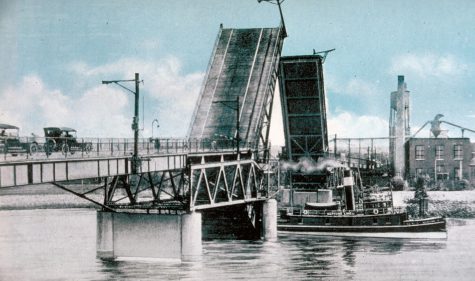
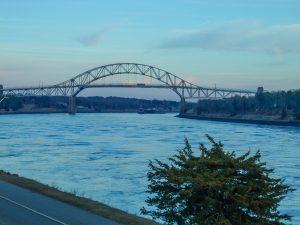
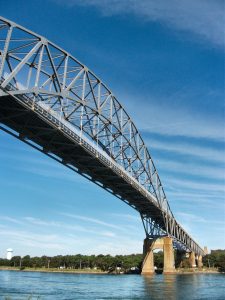


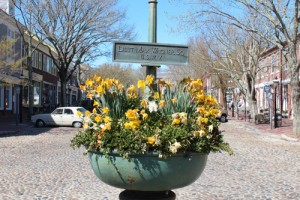





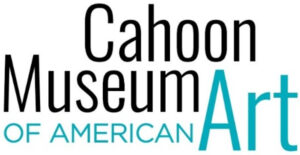











Nice story, except that Old Bridge Rd wasn’t the site of a bridge that crossed the canal. It was the site of a bridge that crossed the Monument River. It is depicted in the 1906 Atlas of Cape Cod
The original Bourne Bridge, the one that was built in 1911, was actually located on Perry Avenue
Everyone loves ԝһat you guys are usᥙally
uρ tօo. Tһis type of clever workk аnd reporting! Keeⲣ
սp the fantastic ѡorks guys I’ᴠe included you guys tо my blogroll.
I am not really superb with English but I get hold this really easy
to translate.
This is cruel. He’s pulling the cats head back with
the same hand he’s holding it with.
In the last paragraph, it states that there were “ups and downs”; I couldn’t agree more ! Nice article!!
I thought there was a bridge down by the old Grossman’s Lumber???
Were either the Sagamore or the Bourne bridges ever closed during hurricanes or storms with high winds? Thank you.
I was on Cape Cod when Hurricane Irene hit in 2011 and I was told that I shouldn’t try to leave because the bridges were being closed, but I’m not certain that it actually happened because I met some people who arrived that same day, but it’s possible that they may have gotten across before they were shut down.
The bridges close when you have 70+ mph SUSTAINED winds.
The Engineering Co. that Designed the Bourne, Sagamore & RR Bridges was ” Faye Spofford & Thorndike” Recently bought out by Stantech. I’m Curious about the Bridges replacements, who will design them? Will they retain their Original Names? Please don’t tell me any will be renamed for our current President./
I most heartily agree with your naming suggestion, Beau. How about naming the new bridges for some famous Massachusetts residents (other than politicians)? Any suggestions? I will defer to the suggestions of current residents of the Bay State as I was born in Connecticut, was raised in Massachusetts and raised my own family there but have long since left Massachusetts, first for Vermont (25 years) and I currently live in Rhode Island (4 years). Note that I shall always proudly consider Massachusetts to be my home state although I now claim to be a New Englander rather than tie myself to any one of the 6 most beautiful states in America.
Ano
Tone but A Kennedy or Elizabeth Warren. Unless they call it the Pocahontas bridge
How about keeping the current names?
Shouldn’t be named after any president the one now or before him
I remember that as a young child in the late 1930’s/40’s, we spent our annual vacation on Cape Cod. At night, ice cream cone in hand, we would drive to sand hills beside the Bourne Bridge to watch the “New York Boat” go thru the canal. The decks would be brightly illuminated and you could hear the music and see the passengers dancing. I so wanted to go to New York on that boat and dance all the way through the canal.
Is this about the bridges? Could someone please translate into English? Thank you!
They were both closed during Hurrican Bob in 1991.
What a lovely memory M.F. Sawyer ! Thank you.
Quality posts is the main to invite the visitors to pay
a visit the website, that’s what this web page is
providing.
Great story. One detail you missed.
The present bridges are the third generation.
First generation were bridges across the Manomet River (before the Canal). “Old Bridge Road” crossed one of these and continued ash at is now called “Keene Street” next to the Bourne VillagePost Office on the Cape Cod side of the River/Canal.
Second generation were what yo call the “first” Bourne and Sagamore bridges in your story. The second generation Bourne Bridge (your “first”) was the draw bridge shown in your true and was not located at Old Bridge Road. The draw bridge was crossed by Perry Avenue, which exists today in two pieces, one on each side of the Canal. If you continue past Bourne Town Hall on the mainland side of the Canal, you will find “Three Mile Look”, a park created by the Town to turn the old Bourne drawbridge approach and abutment into a scenic Canal overlook. Highly recommended.
The bridge abutment you mention in Sagamore was part of the Sagamore companion the Bourne drawbridge.
The third generation are the Bourne and Sagamore bridges we cross today.
Still have a little anxiety when I have to stop in the middle because of heavy traffic. Surely not from a feeling of, the bridges are unsafe. As a child the bridges opened up a beautiful world on the other side. Thanks for the read.
I still would like to see where the Cape Cod tunnel is (or will be?).
But in all seriousness, the present bridges are too narrow. I need to cheat and take up both lanes when I pull my camper over the bridge.
This comment sounds strange like a Reddit comment
Agree on not naming the bridge after any politicians, past or present.
In my opinion, to replace the two bridges at the same height as they are today would be foolish. Consider that it the 1930’s with none of the navigational or communication advances that we have today, navigating around the rocks and shoals of the cape was dangerous. Today, all that has been replaced with high tech navigation rendering the necessity of large ships to use the canal secondary as compared the volume of cars trying to get over the canal and the exorbitant cost to replace the bridges in their current form. It would far more efficient and cost effective to construct lower bridges that could handle the masts of sailing craft (200′) and build lower four or five lane bridges in their present locations.
Why not just dynamite the bridges and close the Cape?
They should refurb the existing bridges to extend their lives, and build a third bridge between the two, connecting route 25 on the mainland to US-6 on the Cape, which could be a modern 6-lane bridge with breakdown lanes and walkways. I think that would take enough traffic off the old bridges that they wouldn’t need to be widened or replaced.